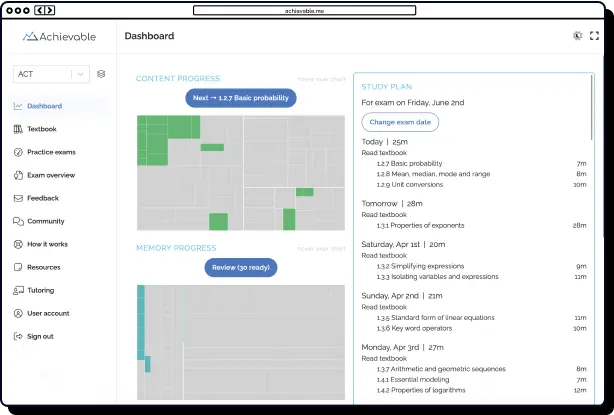
Tactical strength and conditioning: A career overview




Table of contents
- What does a tactical strength and conditioning specialist actually do?
- Required education, skills, and certifications
- Education
- Certifications (Not just fancy letters)
- Skills you truly need
- Career pathways and work environments
- Military installations (Active duty & civilian)
- Law enforcement agencies
- Fire and rescue departments
- Private sector / contract-based roles
- International & humanitarian work
- How to break into the field: tactical career strategies
- Challenges unique to the tactical S&C profession
- Long and irregular hours
- Limited resources and settings
- Emotional weight and burnout
- Gaining trust and navigating culture
- Administrative and bureaucratic barriers
- Opportunities for growth and specialization
- Salary ranges and job market trends
- Final thoughts: Is tactical strength and conditioning right for you?
Tactical strength and conditioning (S&C) goes far beyond helping individuals lift heavier weights or go faster. At its core, tactical strength and conditioning play a vital role in protecting lives. This specialized field is dedicated to preparing military personnel, firefighters, and law enforcement officers for the physically demanding, high-stakes environments they encounter daily. Unlike conventional S&C, which primarily supports athletes, tactical strength and conditioning is focused on building the readiness, resilience, and career longevity of professionals who serve and safeguard our communities.
Whether you’re a veteran S&C coach transitioning to a new career path or a student passionate about optimizing human performance, this guide is crafted to help you grasp the essentials. You’ll also discover how earning relevant credentials, such as a Certified Strength and Conditioning Specialist (CSCS) and the Tactical Strength and Conditioning Facilitator (TSAC-F) certificates, can open doors to meaningful strength and conditioning jobs in the tactical field.

What does a tactical strength and conditioning specialist actually do?
At their core, tactical strength and conditioning jobs focus on helping tactical professionals, military personnel, firefighters, and law enforcement develop greater physical capability, injury resistance, and mental resilience. The responsibilities of a TSAC-F (Tactical Strength and Conditioning Facilitator) go far beyond the basics and require a deep understanding of occupational demands.
You might be:
- Designing strength and conditioning programs tailored to help soldiers manage 80-lb rucks in scorching desert conditions.
- Supporting firefighters in recovering from grueling shifts while also developing strategies to prevent lower back injuries.
- Guiding police officers to balance strength with speed, agility, and mobility for real-world encounters and sudden demands on the job.
- Instructing tactical athletes in specialized mobility drills to minimize joint damage, especially for those wearing body armor or restrictive gear.
Tactical strength and conditioning professionals often operate outside the traditional gym setting. TSAC-F holders routinely work in hangars, garages, outdoor lots, or field camps, adapting on the fly to ever-changing environments. Your athletes may be sleep-deprived, under high stress, and, at times, even skeptical about structured training. The key is meeting tactical operators where they are and guiding them toward operational readiness, always striving to keep them safe, healthy, and at peak performance throughout their careers.
Required education, skills, and certifications
Becoming a tactical S&C professional isn’t just about ticking boxes; it’s about building trust and demonstrating real-world results. Earning your CSCS certification, passing the rigorous CSCS exam, and showcasing proven skills are essential steps, particularly in competitive or contract-based environments where recognized credentials like the CSCS carry significant weight.
Education
- A bachelor’s degree in exercise science, kinesiology, physiology, or related fields is often required.
- A master’s degree can give you an edge, especially if you’re aiming for higher-level or research-integrated roles.
- A background in military service, athletics, or rehab can be a bonus but not a substitute for academic knowledge.
Certifications (Not just fancy letters)
- NSCA TSAC-F (Tactical Strength and Conditioning Facilitator): The TSAC-F is widely recognized as the gold standard tactical strength and conditioning certification for professionals working with military, law enforcement, and first responders. Achieving the TSAC-F credential demonstrates advanced knowledge in tactical performance and readiness.
- CSCS (Certified Strength & Conditioning Specialist): Earning your CSCS certification showcases your expertise in applying scientific training principles across both athletic and tactical populations. The CSCS exam is highly respected and valued within military training units as well as elite sports settings.
- CPR/AED Certification: Up-to-date CPR/AED certification is mandatory for almost all tactical strength and conditioning positions, ensuring you can respond to health emergencies during high-stress scenarios.
- Additional tactical credentials: Completing supplemental tactical certifications, such as Stop the Bleed, Tactical Combat Casualty Care (TCCC), or FEMA resilience training, demonstrates your ability to handle unpredictable and life-threatening environments.
Holding these credentials shows that you can move beyond basic programming. You understand human physiology and performance under the intense stressors common in tactical settings and can support readiness in the field.
Skills you truly need
- Adaptability: You might plan a session, only to have your entire group deployed for a surprise drill.
- Communication: You’re not training traditional athletes but occupational athletes. You’re guiding people who may never have been coached before and who may have emotional or physical trauma.
- Programming for reality, not perfection: Recovery time, fatigue, stress, lack of equipment, you have to program around real-world obstacles.
- Data literacy: Increasingly, tactical programs rely on performance tracking, HRV, or force plate data. You don’t need to be a scientist, but knowing how to interpret and apply data is a big plus.
This is not a role where you just “run workouts.” It’s about building human readiness for real-world tasks that could mean life or death.

Career pathways and work environments
There’s no single path to securing strength and conditioning jobs within the tactical field, as this profession is vast and continues to grow. Some of the most common and rewarding tracks for those seeking strength and conditioning jobs include:
Military installations (Active duty & civilian)
- Programs like the U.S. Army’s H2F (Holistic Health and Fitness) or the Navy’s Warrior Toughness initiatives hire performance coaches, rehab staff, and strength specialists.
- These roles are often part of contracted teams (e.g., through EXOS, KBR, or other government contractors).
- Daily work might include readiness assessments, return-to-duty conditioning, and collaborating with medics and psychologists.
Law enforcement agencies
- Police academies, state trooper divisions, and federal agencies (like the FBI or U.S. Marshals) now see fitness as essential.
- You might train cadets through academy boot camps or work with in-service officers to manage the wear and tear of shift work and high-risk calls.
Fire and rescue departments
- Firefighters carry gear, drag hoses, and climb stairs in smoke, all while battling heat exhaustion.
- Many departments now recognize the need for functional strength programs and recovery systems, especially for older personnel.
- You could also be involved in injury mitigation and post-shift debrief/stretch routines.
Private sector / contract-based roles
- Companies like EXOS and O2X Human Performance contract coaches to the government or elite units.
- These roles can offer better pay, flexibility, and high-level exposure, but often come with less job security than government roles.
- Some tactical coaches freelance or consult across multiple agencies.
International & humanitarian work
- Organizations such as peacekeeping forces, NGOs, and allied military units abroad frequently hire qualified performance professionals for tactical strength and conditioning jobs.
- In these international strength and conditioning jobs, skills like language proficiency, cultural adaptation, and thorough risk assessment become even more critical for success.
Whether you pursue a stable government strength and conditioning job or an exciting private-sector tactical S&C role, this field offers one of the most mission-driven and purpose-filled career paths in the fitness industry.
How to break into the field: tactical career strategies
Start with internships or volunteer work: Many military bases and departments offer short-term programs where you can gain exposure and build trust.
Network intentionally: Attend NSCA Tactical SIG meetups, follow industry veterans on LinkedIn, and stay active in forums.
Create a tactical-specific resume: Emphasize program design for readiness, injury mitigation, and interdisciplinary teamwork, not just gym metrics.
Leverage any prior service: If you’ve served in uniform, use that experience to show leadership and understanding of operational life.
Apply for entry-level roles boldly: Be willing to start small and grow your presence on the ground.
Challenges unique to the tactical S&C profession
This field can be rewarding, but it also comes with unique challenges:
Long and irregular hours
Training may occur at dawn, late evening, or in response to shift schedules. Coaches must be flexible.
Limited resources and settings
Often, tactical S&C is practiced in non-traditional environments. Coaches must make do with minimal equipment and adapt their programming accordingly.
Emotional weight and burnout
You’re helping individuals who experience trauma and stress. You must balance empathy with professionalism and prioritize your own mental health.
Gaining trust and navigating culture
Tactical communities are often skeptical of outsiders. Building credibility and respect takes time and consistency.
Administrative and bureaucratic barriers
Red tape, slow chains of command, and limited budget flexibility can make even simple program changes difficult.

Opportunities for growth and specialization
- Program leadership roles (Head S&C coach, director of performance)
- Tactical rehab and return-to-duty specialties
- Performance analytics and wearable tech integration
- Research and education (university-level tactical S&C programs)
- Consulting for government or defense organizations
Salary ranges and job market trends
- Government jobs: GS-level salaries range from $55,000 to $100,000+, depending on education, location, and experience.
- Contractor roles: Can vary greatly, some private companies pay $60K to $120K+ for elite units.
- Private consulting: If you establish credibility, freelance contracts can be lucrative.
- Trends to watch: Increased demand for H2F coaches, tech-driven readiness solutions, and more emphasis on mental resilience in performance.
Final thoughts: Is tactical strength and conditioning right for you?
This field isn’t for everyone. It’s tough, gritty, and unpredictable. But if you’re driven by service, love the science of performance, and thrive in environments where lives are on the line, then there may be no more rewarding job in the world.
Your job will not just be about strength. It will be about resilience, preparation, and showing up fully so others can, too.

